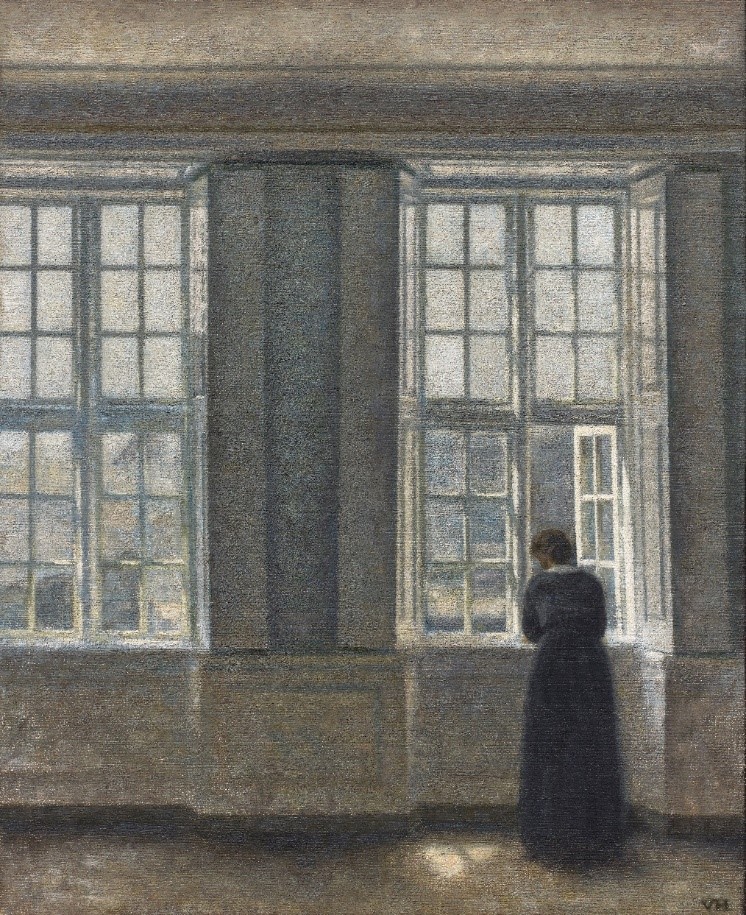HAMMERSHØI AND DANISH ART AROUND 1900
Experience an exhibition featuring masterpieces by Vilhelm Hammershøi.
Ordrupgaard has one of the finest and largest collections of the artist’s works and, in this exhibition, we focus on the artist’s distinctive motifs. Experience Hammershøi’s paintings of empty living rooms, back-turned women, strange landscapes, unusual architectural motifs, and portraits. Light streaming in through tall windows, light and shade spilling shimmeringly across walls and floors. Women deeply immersed in handcraft or their own thoughts are some of the artist’s characteristic motifs, all of them held in Hammershøi’s unusual colour universe of white, grey, and black nuances.
Hammershøi is a beacon of Danish art, and his works offer a glimpse into a world of longing, absence, melancholy, and a stillness often associated with a typical Scandinavian atmosphere. Equally remarkable in Danish art is L. A. Ring, who is represented by many works at Ordrupgaard. His works, too, focus on the conditions and challenges presented by modern life in the cities and, not least, in the countryside, which he often resorted to for his motifs. Ring’s special pictorial universe can be experienced through several major works.
Danish art around 1900 was creative and characterised by upheaval – the exhibition also presents works by artists such as Fritz Syberg, Johannes Larsen, Peter Hansen, Bertha Wegmann, Theodor Philipsen, and Joakim Skovgaard. They were all inspired by the new impulses felt from abroad where coarse brushwork, a sketch-like technique, and the use of bright colours had made their mark.
Art ignored the old norms and many artists worked in an extended field where decorative art ceramics became a new and fertile field. The exhibition presents a fine selection of decorative art featuring works by Thorvald Bindesbøll, Svend Hammershøi, Karen Hannover, and Suzette Holten, all of whom belonged to the prevailing experimental artistic environment. The artists also designed furniture, and the exhibition includes furniture designed by Johan Rohde and Thorvald Bindesbøll, for example. Art was now destined to become part of everyday life.

Vilhelm Hammershøi, The Tall Windows, 1913, Ordrupgaard